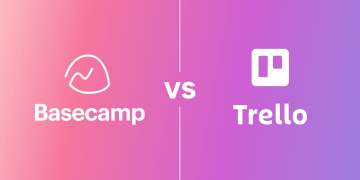In the ever-evolving landscape of business management, project management tools have become an indispensable part of organizing and executing projects. With an increasing number of businesses switching from conventional project management solutions to more streamlined and collaborative platforms, Basecamp has emerged as a strong contender. But can Basecamp truly replace traditional project management software? Or is it just a flashy alternative that doesn’t meet the demands of complex projects?
In this article, we’ll explore what Basecamp offers, how it compares to traditional project management software, and whether it’s the right fit for your team.
The Rise of Basecamp: What Is It?
Basecamp, a project management and team collaboration tool, was founded in 2004 by Jason Fried, Carlos Segura, and Ernest Kim. Its initial mission was to create a platform that simplifies the often-overwhelming process of managing projects, without the clutter of unnecessary features that many traditional tools have. Over time, Basecamp has evolved into a popular choice among businesses of all sizes, thanks to its simplicity, ease of use, and focus on team communication.
What sets Basecamp apart from traditional project management software is its minimalist approach. It doesn’t overwhelm users with too many options, instead offering a set of essential tools that are easy to navigate. This simplicity is both its strength and, depending on your needs, its potential limitation.
Basecamp vs. Traditional Project Management Tools
To truly determine whether Basecamp can replace traditional project management software, let’s compare it to some of the most widely-used tools in the industry—like Trello, Asana, Monday.com, and Jira—on several key features.
1. Task and Project Organization
Traditional Tools:
Traditional project management tools like Jira, Asana, and Monday.com excel in task and project organization. These tools provide multiple ways to categorize tasks, including lists, boards, timelines, and calendars. You can set up workflows, assign dependencies, and track task statuses in detail. For larger teams or projects that require intricate workflows and strict project timelines, these tools offer flexibility and customization that can be a huge asset.

Basecamp:
Basecamp takes a different approach to task organization. Instead of presenting a range of complicated views (such as Kanban boards or Gantt charts), Basecamp focuses on simplicity. It provides to-do lists where tasks can be assigned to team members, and due dates can be set. However, it lacks the level of customization and detailed tracking that traditional tools offer. For teams with more straightforward tasks and limited project complexities, this minimalist approach can be a relief. But for teams managing complex projects with intricate workflows, Basecamp might fall short.
2. Collaboration and Communication
Traditional Tools:
Communication in traditional project management software is often fragmented. While tools like Asana and Trello have comment sections under each task, they don’t necessarily provide an integrated communication system for teams. This means teams often need to rely on external messaging apps like Slack, email, or even video conferencing tools to have discussions that go beyond task-related conversations.
Basecamp:
Basecamp shines in the collaboration department. Its most attractive feature is the integrated chat function known as Campfire. Campfire allows real-time communication, and the platform also offers message boards, where team members can engage in threaded discussions about project-related matters. This setup encourages transparent communication without jumping between multiple platforms. The ability to keep all conversations and project materials in one place is a significant advantage of Basecamp over traditional tools that require switching between apps.
3. File Management
Traditional Tools:
In traditional project management tools, file management is often tied to the task management system. For example, in Monday.com and Trello, users can attach files to tasks or discussions. These platforms often integrate with cloud storage services like Google Drive, Dropbox, or OneDrive, allowing teams to manage and share files efficiently. However, navigating between different tools for file management and task management can lead to some confusion.
Basecamp:
Basecamp offers a more seamless file management system. With a Docs & Files feature, all documents and files are stored within the project itself. Basecamp integrates file sharing, task management, and collaboration into one platform, meaning that teams don’t have to leave the system to access files related to a specific project. Additionally, Basecamp’s system allows for comments and discussions around specific files, which further enhances collaboration.
4. Time Tracking and Reporting
Traditional Tools:
Most traditional project management tools come with robust time tracking and reporting features. For instance, Asana allows users to track time spent on tasks using third-party integrations like Harvest or Toggl. These tools also offer powerful reporting functionalities to track project progress, resource allocation, and team productivity. Project managers can generate detailed reports to analyze project performance and make informed decisions.
Basecamp:
Basecamp does not offer native time tracking or in-depth reporting features. While it does provide some basic project overviews, like upcoming tasks and project milestones, Basecamp lacks the detailed analytics and resource management features of traditional tools. This could be a deal-breaker for teams that require advanced reporting capabilities or need to track how time is spent across different tasks and projects.
5. Customization and Scalability
Traditional Tools:
Traditional project management tools like Jira or Monday.com are highly customizable. These platforms allow users to create custom workflows, fields, and reports, making them suitable for a wide range of industries, from software development to marketing and event planning. This level of customization makes them more scalable for large organizations or complex projects.
Basecamp:
Basecamp’s appeal lies in its simplicity, which means it doesn’t offer much customization. It’s designed to be user-friendly and intuitive, which may be great for smaller teams or startups, but not ideal for enterprises that need extensive customization. Furthermore, Basecamp’s scalability is somewhat limited because it doesn’t cater to advanced project management needs like custom workflows, integrations, or resource planning.
6. Pricing
Traditional Tools:
Pricing for traditional project management tools varies greatly. For example, Jira has a tiered pricing model based on the number of users and the level of functionality needed, while Trello offers both free and paid plans. Enterprise-level tools like Monday.com and Asana tend to be on the pricier side, especially when advanced features and integrations are required.

Basecamp:
Basecamp offers a simple, flat-rate pricing structure. Regardless of how many users you have, you only pay one price. As of now, Basecamp’s pricing is around $99 per month, which includes all features and unlimited users. This makes it an attractive option for small businesses or teams that want a straightforward, all-in-one tool without worrying about fluctuating costs as their team grows.
The Case for Using Basecamp
For teams that don’t require complex workflows or advanced reporting features, Basecamp is a fantastic option. Its simplicity, clean design, and emphasis on collaboration make it an excellent choice for teams that value ease of use over customization. Startups, small businesses, and remote teams can benefit greatly from its integrated chat system, to-do lists, file management, and message boards. The cost-effectiveness of its flat-rate pricing model is also a strong selling point for companies that want to keep overhead low while still maintaining an organized and collaborative work environment.
Basecamp’s ability to consolidate communication, task management, and file sharing into a single platform can significantly reduce the overhead of managing multiple tools. If you’re looking for a project management system that’s simple, straightforward, and doesn’t require a steep learning curve, Basecamp may very well be the right choice.
When Traditional Tools Are Better
However, for large teams, complex projects, or industries that require detailed reporting, resource management, and customization, traditional tools are likely the better choice. Software like Jira or Monday.com offers the depth and flexibility that Basecamp simply doesn’t provide. These tools are better suited for organizations that require strict task dependencies, intricate project timelines, and advanced project analytics.
If your team needs features like time tracking, financial tracking, and highly customizable workflows, Basecamp may not meet those needs without additional integrations. For project managers who need to generate reports or allocate resources efficiently, traditional project management tools provide greater functionality.
Conclusion: Is Basecamp the Right Choice?
Basecamp is undoubtedly a game-changer for teams looking for a simple, no-frills project management solution. It’s intuitive, affordable, and effective for smaller teams or projects with fewer complexities. However, traditional project management software like Jira, Asana, or Monday.com will still be the go-to for larger teams with more complex needs.
Ultimately, the decision of whether Basecamp can replace your traditional project management software depends on your team’s specific needs. If simplicity and ease of use are your priorities, Basecamp might be a perfect fit. If you require more sophisticated tracking, reporting, and custom workflows, you may want to stick with a more feature-rich solution.























